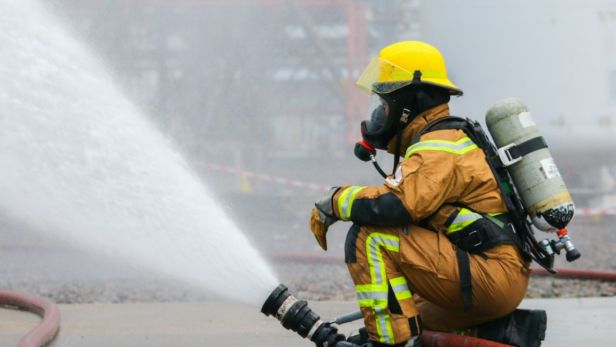EPA data show almost 900 ‘forever chemical’ foam releases, many into local waterways
By Jared Hayes | EWG | March 15, 2022

Read the full article by Jared Hayes (Environmental Working Group)
“Data newly released by the Environmental Protection Agency show almost 900 spills or uses of firefighting foam made with the toxic ‘forever chemicals‘ known as PFAS across the U.S. and the amount that entered local waterways.
It is unclear whether surrounding community water supplies were contaminated by PFAS from the spills or use of the aqueous film-forming foam, or AFFF, that contained the chemicals.
The data, recorded by the National Response Center and posted to the EPA’s website, show that since 1990, there have been exactly 897 documented spills or usage reports of AFFF containing PFAS. Many of the sites with the largest foam releases were Department of Defense and federal facilities, but some were commercial harbors and civilian firefighting events.
The highest releases entering waterways in the past 30 years
| City | State | AFFF spilled in water (gallons) | Year of spill |
| Melbourne | Fla. | 805,000 | 1995 |
| Guntersville | Ala. | 140,000 | 1998 |
| San Antonio | Texas | 100,000 | 1992 |
| Lakehurst | N.J. | 15,000 | 2017 |
| Corpus Christi | Texas | 15,000 | 2015 |
| Bridgeport | Conn. | 5,000 | 1991 |
| Fort Worth | Texas | 2,200 | 2019 |
| Virginia Beach | Va. | 2,000 | 2002 |
| Beale Air Force Base | Calif. | 1,800 | 2018 |
| Norfolk | Va | 1,500 | 2002 |
The largest amount to reach water was 805,000 gallons at Melbourne Orlando International Airport, in Melbourne, Fla., when a fire at a hangar caused the AFFF system to release.
…DOD sites are responsible for six of the 10 largest spills in the data posted to the EPA’s website, and the Pentagon has known of the risks to communities posed by PFAS since at least 1980s but took decades to act. The 2021 National Defense Authorization Act requires that by 2024 the DOD no longer use firefighting foam made with PFAS.
The Federal Aviation Administration is required to allow airports the option of switching to firefighting foams that don’t contain PFAS but let the deadline pass for updating its standards, despite having had three years to act. Even though Congress set the deadline in 2018 as part of that year’s FAA Reauthorization Act, the agency has said it needs more time. So airports will keep being forced to use AFFF, which is typically used on high-heat fuel fires.”…
This content provided by the PFAS Project.